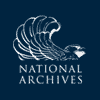Thomas Jefferson to George Washington, 8 March 1781
From Thomas Jefferson
Richmond march 8. 1781.
Sir
I had the pleasure of receiving a Letter from General Greene dated High Rock ford february 29. (probably march 1) who informs me that on the night of the 24th Colo. McCall surprized a subaltern’s guard at Hart’s mill, killed 8 and wounded and took 9 prisoners, and that on the 25th Genl Pickens and Lieutenant Colo. Lee routed a body of near 300 tories on the Haw river, who were in arms to join the British army, killed upwards of 100 and wounded most of the rest, which had had a very happy effect on the disaffected in that country.1
By a Letter from major Magill an officer of this state whom I had sent to Genl Greene’s head quarters for the purpose of giving us regular intelligence dated Gilford county march 2d I am informed that Ld Cornwallis on his retreat erected the british standard at Hillsborough, that a number of disaffected under the command of a colo. Piles were resorting to it when they were intercepted by Genl Pickens and Lt Colo. Lee as mentioned by General Greene and that their commanding officer was among the slain, that Lord Cornwallis after destroying everything he could at Hillsborough moved down the Haw river that Genl Greene was within six miles of him, that our superiority in the goodness tho not the number of cavalry prevented the enemy from moving with rapidity or foraging. Having desired major Magill to be particular in informing me what corps of militia from this state joined General Greene he accordingly mentions that 700 under General Stevens and 400 from Botetourt had actually joined General Greene, that Colo. Campbell was to join him that day with 600 and Colo. Lynch with 300 from Bedford were shortly expected; the last three numbers being riflemen.2 besides these mentioned by major McGill, Genl Lawson must before that time have crossed Roanoke with a body of militia the number of which has not been stated to me. Report makes them 1000 but I suppose the number to be exaggerated. 400 of our new levies left Chesterfield court house on the 25th of february and probably woud cross the Roanoke about the first or second of march.
I was honoured with your Excellency’s letter of Feb. 21.3 within seven days after its date.4 We have accordingly been making every preparation on our part which we were able to make. the militia proposed to operate will be upwards of 4000 from this state and 1000 or 1200 from Carolina said to be under Genl Gregory. The enemy are at this time in great measure blockaded by land, there being a force on the east side of Elizabeth river. tho they have a free exit from Elizabeth river, They suffer for provisions, as they are afraid to venture far enough to marode in any great degree; lest the french Squadron shoud be in their neighbourhood and come on them. Were it possible to block up the river, a little time woud suffice to reduce them, by want & desertions and woud be more sure in its event than an attempt by storm. I shall be very happy to have it in my power to hand you a favorable account of these two armies in the south.5 I have the honour to be with the greatest esteem & respect Your Excellency’s most obedient & most hble servant
Th: Jefferson
LS, DLC:GW; LB, Vi; copy, DLC: Jefferson Papers.
1. See Nathanael Greene to Jefferson, 28 Feb. (mistakenly dated 29 Feb.), in , 5:22–24; see also , 7:367–68. For the smaller action, which actually occurred on 23 Feb., see Andrew Pickens to Greene, that date, in , 7:341. When Maj. Gen. Nathanael Greene wrote GW on 28 Feb., he detailed how troops under Lt. Col. Henry Lee, Jr., and Col. Andrew Pickens defeated a detachment of Loyalist provincials and militia at Hart’s Mill, near Hillsborough, N.C., on 25 February.
James McCall (1741–1781) had served as a captain in the South Carolina Rangers before becoming a lieutenant colonel in the South Carolina state troops. McCall died of smallpox in April 1781 (see Pickens to Greene, 3 May 1781, in , 8:197–98).
2. For Maj. Charles Magill’s report, see his letter to Jefferson, 2 March, in , 5:43–45; see also Jefferson to Magill, 18 Feb., in , 4:649–50.
Charles Magill (1760–1827) of Winchester, Va., joined the 11th Virginia Regiment as an ensign in November 1776, received promotion to lieutenant in March 1777, and became regimental adjutant the following November. He resigned from the Continental army in April 1778. Magill subsequently served in the Virginia state Garrison Regiment, joining as a captain in June 1779 and rising to major in February 1780. Later in 1780, he acted as an aide-de-camp to Maj. Gen. Horatio Gates. He became a supernumerary officer on 15 March 1781.
Charles Lynch (1736–1796) served as colonel of the Bedford County, Va., militia and joined Greene’s army in North Carolina before the Battle of Guilford Courthouse on 15 March 1781 (see Lynch to Greene, 4 March, in , 7:390, and Greene to Samuel Huntington, 16 March, printed as an enclosure with Greene to GW, 17 March).
3. Jefferson wrote the previous three words on the LS.
4. In his letter of 21 Feb., GW advised Jefferson that French warships and a detachment under Major General Lafayette intended to cooperate with the Virginia militia against British forces in the state.
5. GW replied to Jefferson on 21 March.

![University of Virginia Press [link will open in a new window] University of Virginia Press](/lib/media/rotunda-white-on-blue.png)
